Voltage relay overview with control of current DigiTop VA-protector 63A

Intro
When repairing the future of their own housing, in addition to shifting all the wiring in the apartment and installing the shield with machine guns, the question arose of providing protection for equipment against overvoltage.
Constant construction of new homes requires the laying of new and new power cables with a voltage of 35 and 110 kV, but they are “forgotten” to compensate for their capacity: they simply do not install shunt reactors. Because of what there is a resonance with pumping power.
In particular, this happened on December 2 in Kiev, when the generator fell off at TEC-5 and in some districts of Kiev a decent amount of equipment burned due to a power surge.
')
Hidden text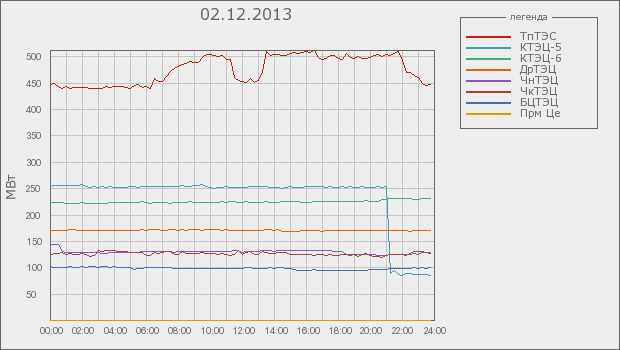

This prompted me to select and install a voltage relay (PH).
When searching for existing solutions, devices of well-known European brands or did not provide the required characteristics (since PHs are mainly used in industry, they are designed for currents up to 10 A and installation paired with a contactor, which requires a minimum of 4 seats per DIN-rail, which I did not have), or cost a decent amount.
A cursory analysis of the devices of domestic manufacturers showed that the devices are of poor quality and, at times, even dangerous for use, as evidenced by reviews and tests of similar devices in various forums:
krainamaystriv.com/threads/12117
krainamaystriv.com/threads/10395
krainamaystriv.com/threads/9559
krainamaystriv.com/threads/3885
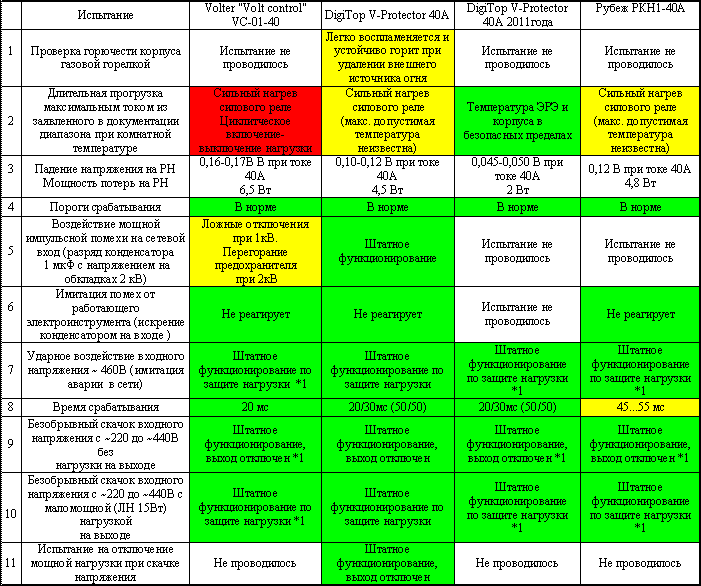
There were also references to the DigiTop relay of the new model and the statement that they were much better than what was previously released. Unfortunately, to find a review or at least a photo of the insides of the device failed.
It was decided to buy a cat in a bag and disassemble it, because I didn’t want to trust the unknown box for the security of the whole house.
Specifications
| Parameter | Value |
|---|---|
| Input voltage: | 0-400V |
| Indicated voltage: | 50-400V |
| Voltmeter error: | no more than 5 V |
| Maximum load current: | no more than 80A |
| Shutdown time by upper limit: | 0.02 sec |
| Low limit trip time | no more than 1 s (120-200V) 0.02 s (<120V) |
| Current trip time | 600 seconds (Inom <Iizm <Imax :); 0.04 seconds (Isis ≥Imax) |
| Lower shutdown limit (step 1B): | 120-200 V |
| Upper shutdown limit (step 1B): | 210-270 V |
| On-delay time (step 5 sec): | 5-600 seconds |
Design
The device is manufactured in a three-unit case (according to DIN 43 880, for an assembly strip in accordance with EN 50 022, the width of one installation module is 17.5 mm per module strip) for installation on a TH / 35-7.5 and TH / 35-15 mounting profile - in people - DIN rail. The manufacturer claims case material as ABS plastic that does not support burning.
The censure is caused by the tongue, which fixes the device case on the DIN-rail: it is frankly weak and the device can move freely from side to side.
On the front panel there are 2 LED digital displays (three-digit seven-segment with a dot), covered with a red matte plastic, they are quite bright. To the right of them are 3 control buttons.
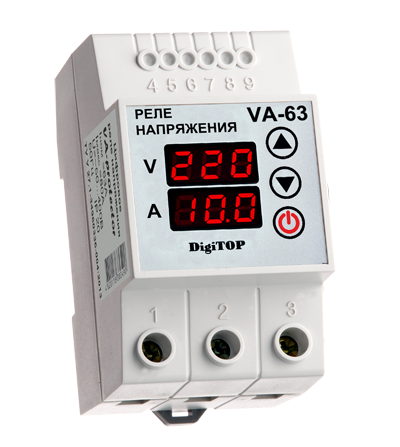
Connection of conductors is carried out from below. The terminals are made of copper and brass. They are quite massive.


The connection of the switching relay to the terminals is carried out using a flexible copper bus welded by resistance welding at both ends (Jack 3.5 mm - for comparison).
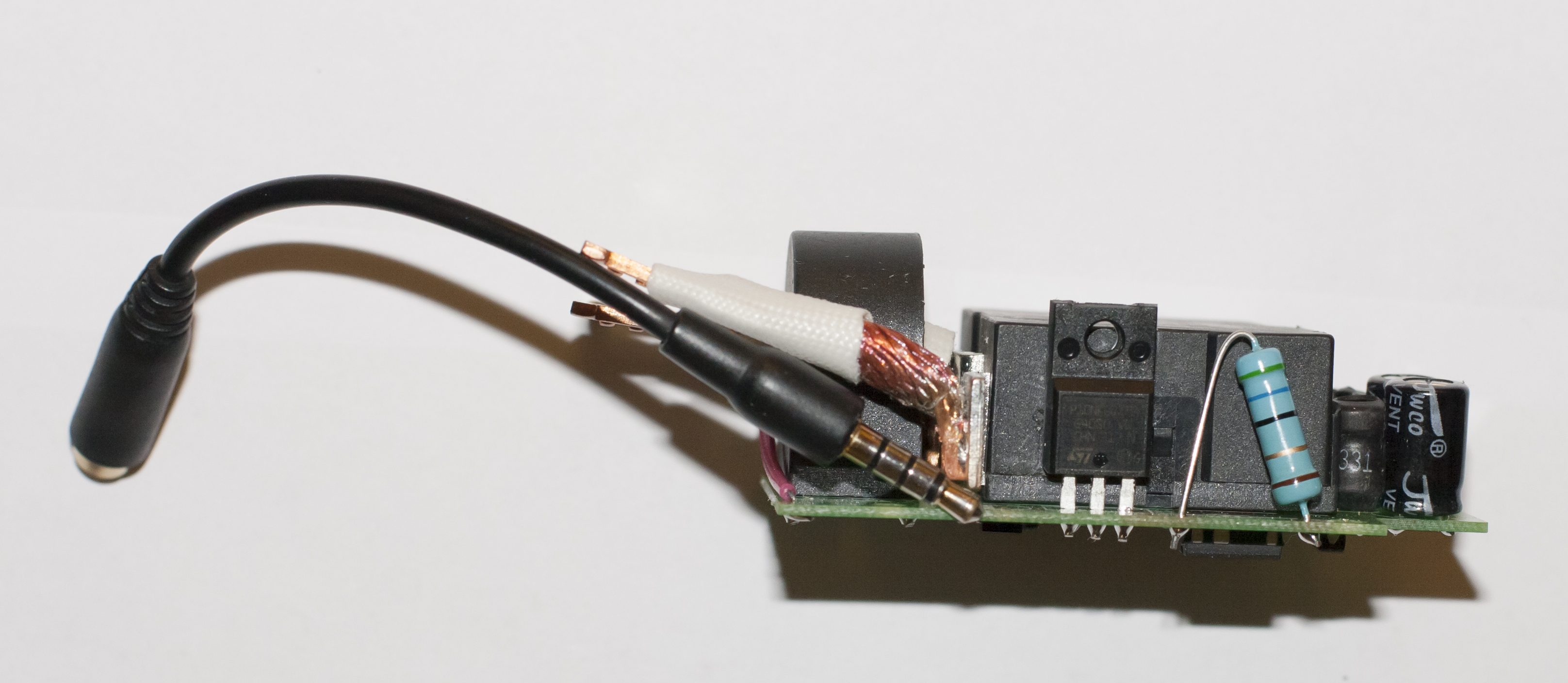
Circuitry
The power part of the device is based on the Chinese relay NRL08B-12D ( www.terraelectronica.ru/pdf/NCR/NRL-08B.pdf ).
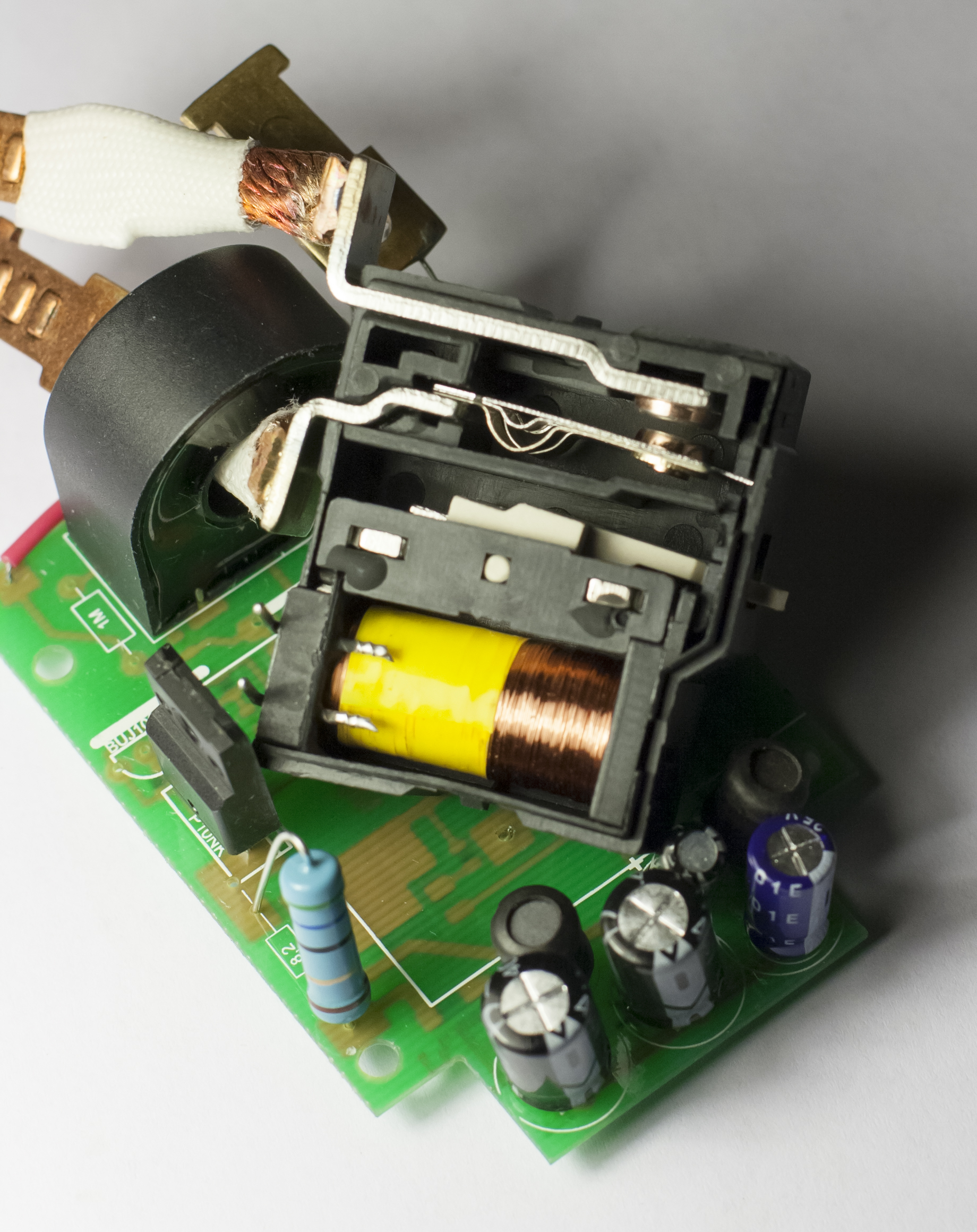
This is a relay with normally open contact latching. Datasheet tells us that it is able to open the load at 15000VA, which is 68A at a voltage of 220V. Contacts are made of silver coating. The maximum response time is 15ms.
The power supply for the control part is made on the basis of the specialized IC LNK304-306 for the power supply unit without galvanic isolation.
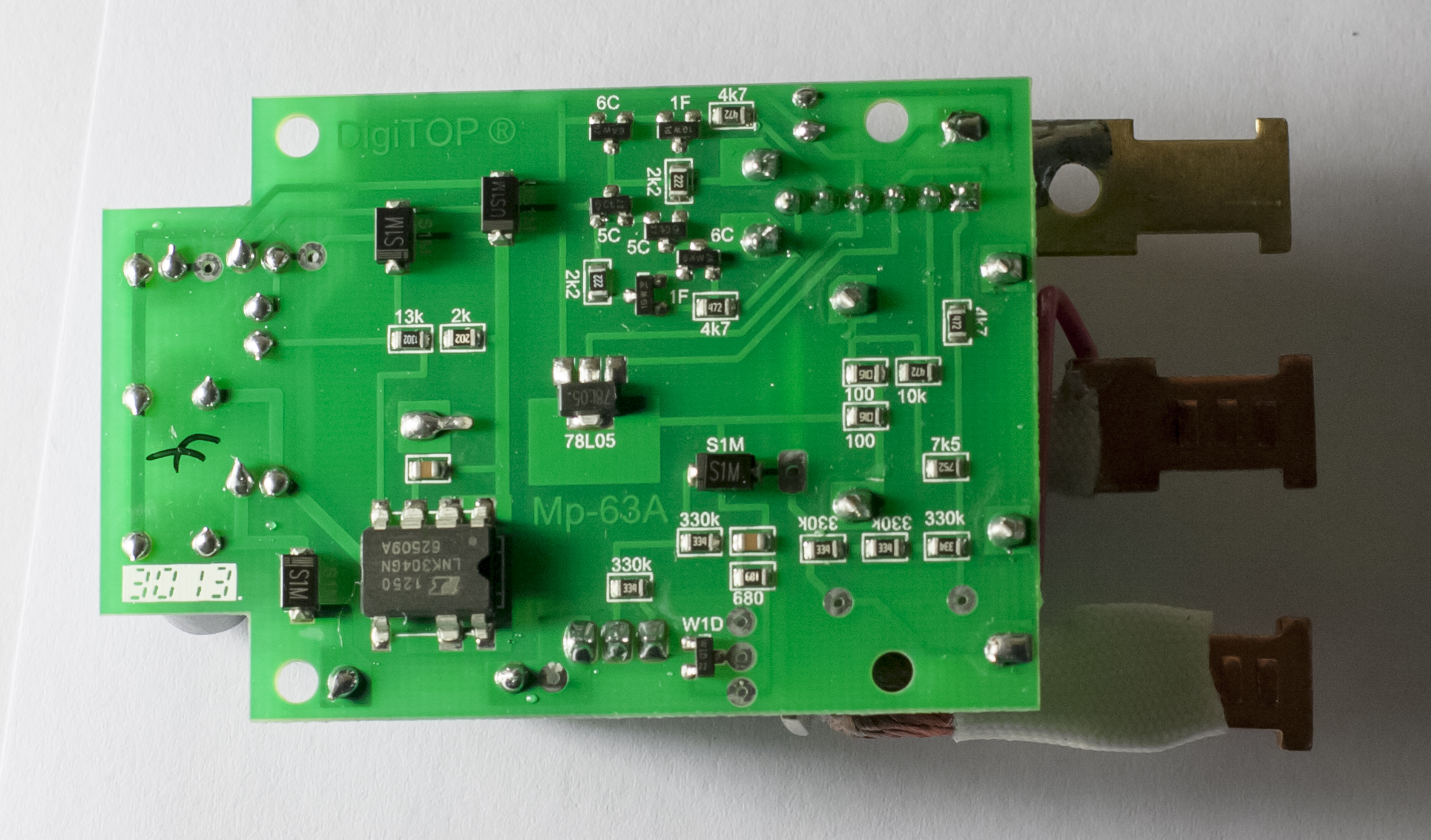

Datasheet schematic

A good solution, in my opinion, in contrast to the previously used on ballast capacitors.
On the input of the power supply unit, a limiter is installed on the field-effect transistor, which limits the voltage across the electrolytic capacitors and the input of the chip (LNK304-306).
The control part is executed on the PIC controller.
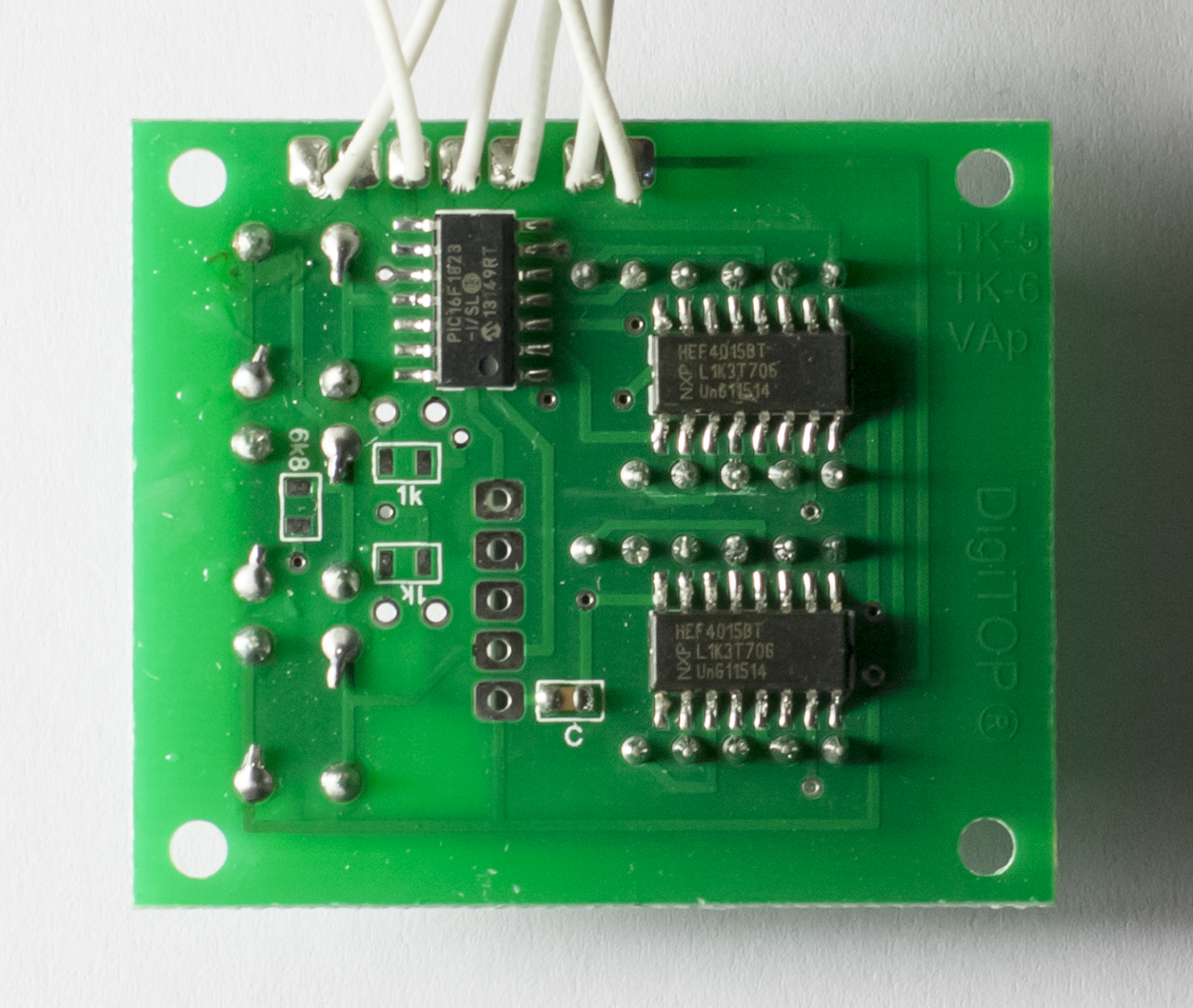

Allows you to configure the upper and lower voltage limits, set the device on delay, after the protection trips, enable or disable the current protection. The device does not allow setting the time of shutdown at Inom <Iizm <Imax. The selection of the tripping current is possible only when selecting the device rating (32, 40, 50 and 63 A).
Ergonomics
Device management is simple and intuitive.
Certain inconveniences are caused by the rate of increase / decrease of the thresholds for voltage and delay in the settings mode - 1V / sec and 5s / sec both when held down and when pressed frequently.
Mounting quality
Installation is well done, brilliant soldering, moderate solder. Residual flux removed almost everywhere. There are slight discrepancies in the dimensions of the parts with their seats.
findings
The considered relay is a quality All-in-one product for a democratic price. The manufacturer thoroughly reworked the design, applied a competent circuit solution and good components. There are some flaws that do not affect the performance of the device. My rating is 4+. Such a device is not terrible to install for the protection of the entire house.
Result
In crowded but not mad



PS:
Please send all comments about errors, omissions and inaccuracies to send to the LAN.Source: https://habr.com/ru/post/208252/
All Articles